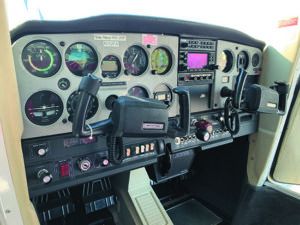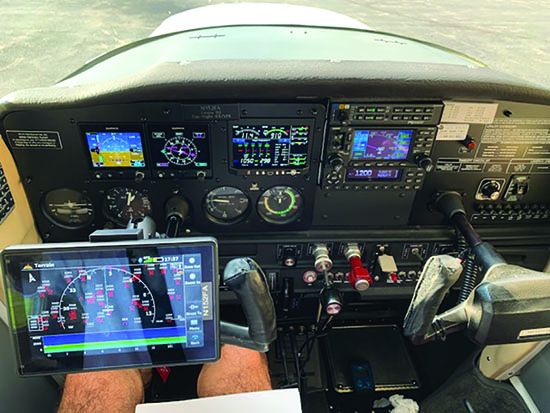This month’s panel for planning is on a 1980 Cessna 152 II, a clean airplane that’s undergone substantial refurbishment, putting it at the top of the model food chain. The sizable investment includes long-range fuel tanks, new Plexiglas, new paint and interior, engine work and an avionics retrofit that kicks the panel out of the Carter years, although it has seen an upgrade before—leaving a good platform to work with.
OFF TO A GOOD START

Coexisting with the original-equipment iron gyros and static flight instruments is a Garmin GNS 430W with GI-106A nav indicator, PS Engineering audio panel/intercom and a King KT76A transponder. With a heated pitot, the airplane was capable as-is for actual IFR, but it lacked the confidence-building reliability of electronic gyros.
While the plane went into the shop for several enticements, including LED lighting, VGs and interior work, it made sense to tackle the avionics at the same time. “With the vacuum system and related instruments removed, I had some equipment to sell. Plus, I decided on dual Garmin G5 flight instruments because the panel was already taken apart,” owner Sal Sidoti told us.
A sizable portion of that panel work (resulting in a long downtime because of supply issues) included a JP Instrument primary EDM engine and fuel display. Taking it one step further was removing the original Cessna fuel quantity sensors in favor of CiES digital fuel senders, which display on the JPI display.
Cessna 152s weren’t designed for today’s EFIS (even small-screen models) so there isn’t much panel real estate to work with, but I think Sidoti and installer Stein Air got it right with the side-by-side G5 configuration and the placement of the big JPI display.
ADS-B Out and Bluetooth traffic and weather data come from a Garmin GTX 345 transponder for display on a Garmin portable.
WEIGHT AND VALUE
The current Aircraft Bluebook suggests an average retail price of $46,000, but with all of $25,000 invested in the avionics upgrade, plus the other major improvements, this 152 (nearly perfectly equipped as a modern instrument trainer) could likely sell for a lot more in the current market.
Sidoti did a double take when he saw the revised weight and balance. The new avionics (including the removed vacuum system) did little to improve the useful load dinged by the new interior and other accessories, including the 1/4-inch-thick Plexiglas and bigger fuel tanks.
Still, there’s a lot to like, especially the decluttered and powder-coated instrument panel, which offers better instrument lighting at night. The 28-volt electrical system (with new alternator and battery) efficiently supports all the new electronics, made even more efficient by LED lighting with lower current draw compared to the old incandescent lights. With all that money invested, the plane is keeper.
“I’m planning a long relationship with this 152,” Sidoti told us, and with just enough modern avionics, it promises to deliver plenty of utility.


